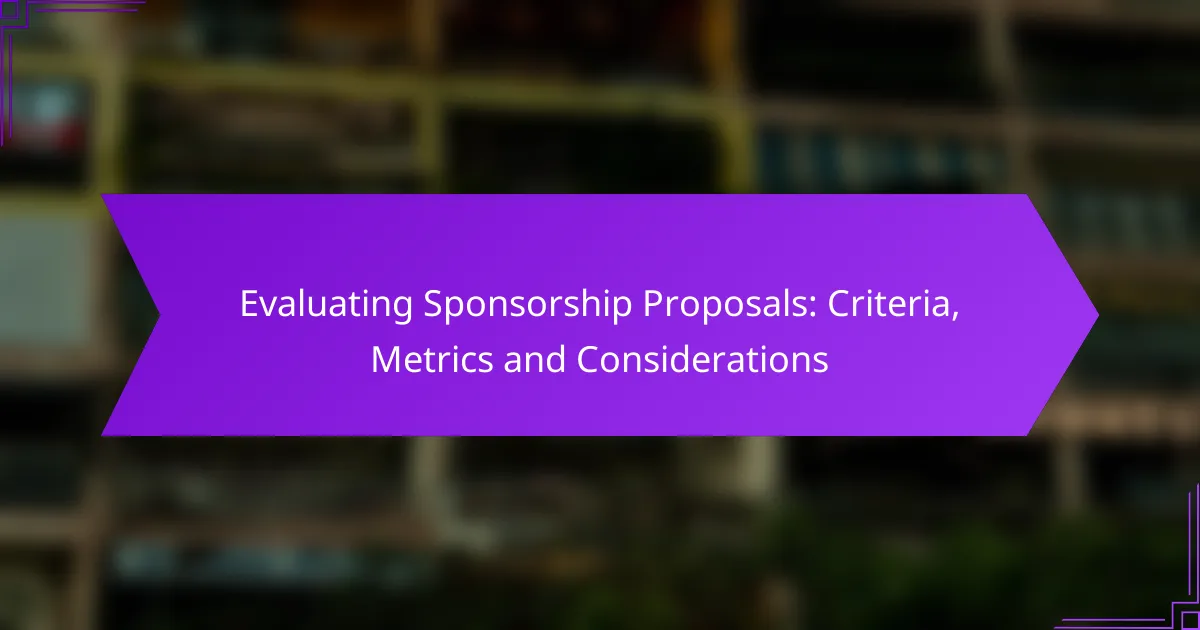Evaluating sponsorship proposals requires a careful analysis of various criteria, including alignment with brand values, audience demographics, and potential reach. By focusing on measurable outcomes and engagement levels, organizations can ensure that their sponsorships effectively support marketing objectives. Additionally, avoiding common pitfalls such as neglecting long-term benefits and audience fit is crucial for fostering successful partnerships.
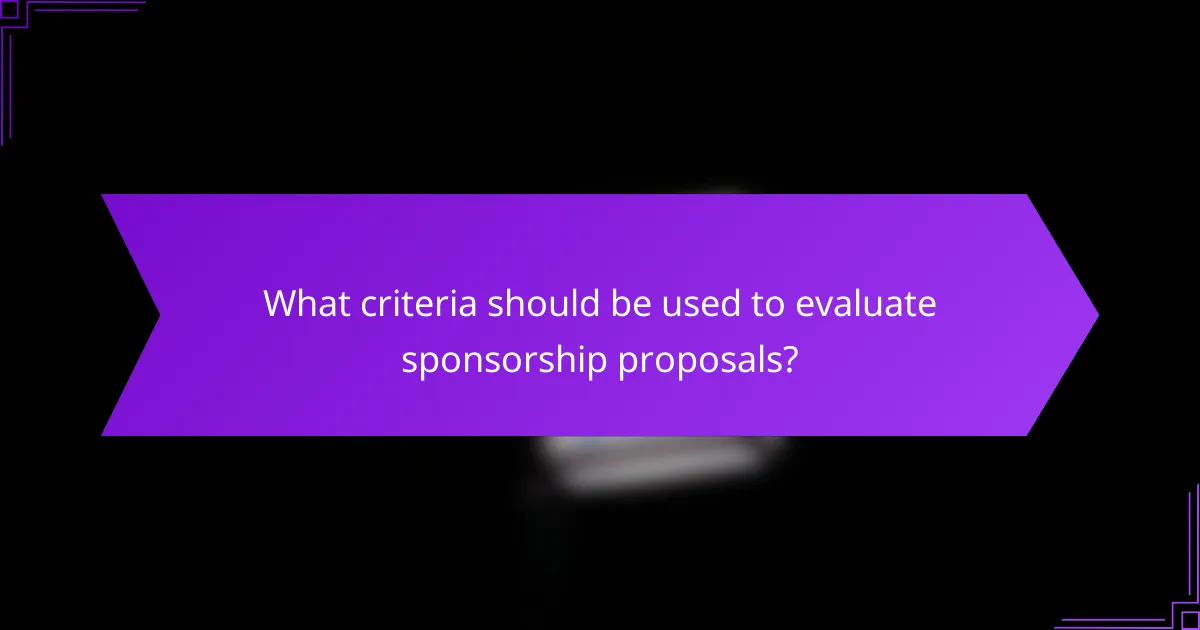
What criteria should be used to evaluate sponsorship proposals?
When evaluating sponsorship proposals, key criteria include alignment with brand values, target audience demographics, potential reach and visibility, activation opportunities, and measurable outcomes. These factors help determine the overall fit and effectiveness of the sponsorship in achieving marketing goals.
Alignment with brand values
Assessing alignment with brand values is crucial for ensuring that the sponsorship resonates with your organization’s mission and ethos. A partnership that reflects your brand’s principles can enhance credibility and strengthen customer loyalty.
Consider whether the sponsored entity shares similar values or engages in practices that complement your brand. For instance, a company focused on sustainability should prioritize partnerships with environmentally conscious organizations.
Target audience demographics
Understanding the target audience demographics of both your brand and the sponsorship opportunity is essential. This includes age, gender, income level, and interests, which can influence the effectiveness of the partnership.
Evaluate whether the sponsorship will reach your desired customer base. For example, if your product targets millennials, a partnership with an event popular among that age group will likely yield better results than one aimed at an older demographic.
Potential reach and visibility
Potential reach and visibility refer to the number of people who will be exposed to the sponsorship. This can include event attendance, media coverage, and social media impressions. A higher reach often translates to greater brand awareness.
Analyze the channels through which the sponsorship will be promoted. For instance, a sponsorship of a widely televised event may offer significantly more visibility than a local community gathering.
Activation opportunities
Activation opportunities involve the ways in which your brand can engage with the audience during the sponsorship. This can include on-site activations, promotional giveaways, or digital campaigns that enhance the sponsorship experience.
Consider how you can leverage the sponsorship to create memorable interactions with potential customers. For example, hosting a booth at an event allows for direct engagement and can help generate leads.
Measurable outcomes
Measurable outcomes are critical for assessing the success of a sponsorship. Establish clear metrics, such as brand awareness, engagement rates, or sales conversions, to evaluate the effectiveness of the partnership.
Set specific goals before the sponsorship begins, and use tools like surveys or analytics to track performance. For instance, if your goal is to increase website traffic, monitor changes in visitor numbers during and after the sponsorship period.
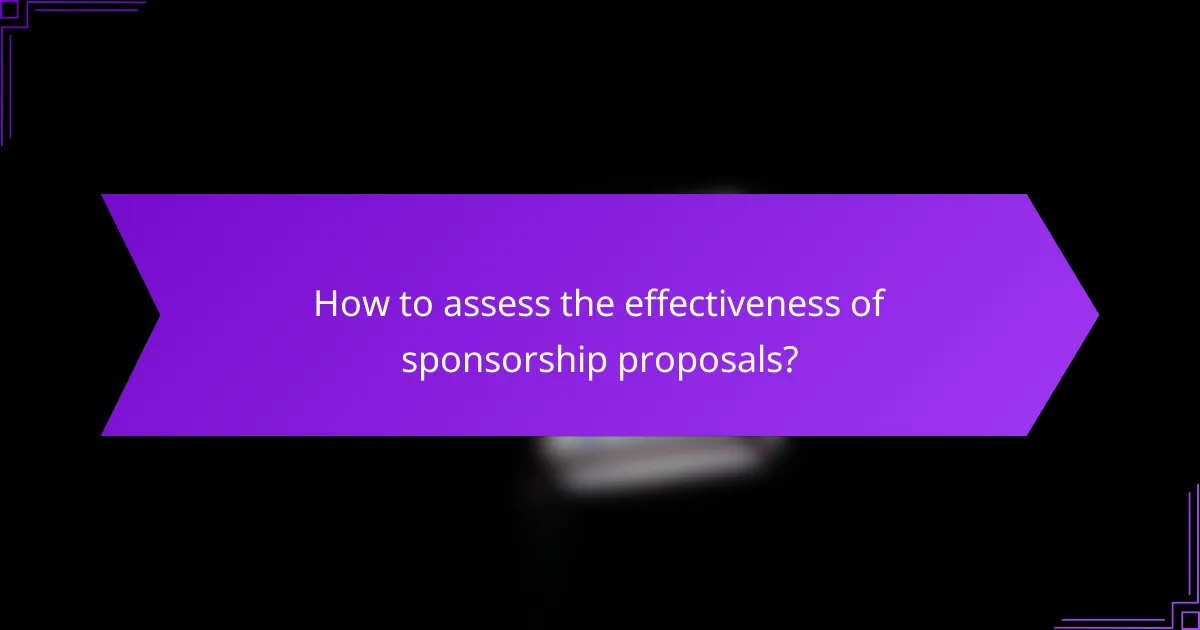
How to assess the effectiveness of sponsorship proposals?
To assess the effectiveness of sponsorship proposals, evaluate their alignment with your goals and the potential impact on your audience. Key factors include measurable outcomes, engagement levels, and overall return on investment.
Key performance indicators (KPIs)
Key performance indicators (KPIs) are essential metrics that help gauge the success of a sponsorship proposal. Common KPIs include brand awareness, audience reach, and lead generation. Establishing specific, measurable KPIs allows for a clearer assessment of whether the sponsorship meets your objectives.
When selecting KPIs, consider the nature of your event or campaign. For instance, if the goal is to increase brand visibility, track metrics like impressions and social media mentions. If generating leads is the focus, monitor sign-ups or inquiries resulting from the sponsorship.
Return on investment (ROI)
Return on investment (ROI) measures the financial return generated from a sponsorship relative to its cost. To calculate ROI, use the formula: (Net Profit / Cost of Sponsorship) x 100. A positive ROI indicates that the sponsorship is financially beneficial, while a negative ROI suggests otherwise.
When evaluating ROI, consider both direct and indirect benefits. Direct benefits may include sales increases, while indirect benefits can involve enhanced brand reputation or customer loyalty. Aim for an ROI that meets or exceeds industry benchmarks, which typically range from 20% to 50% for successful sponsorships.
Engagement metrics
Engagement metrics provide insight into how effectively a sponsorship resonates with the target audience. Key engagement metrics include social media interactions, event attendance, and audience feedback. High engagement levels often correlate with successful sponsorship outcomes.
To effectively measure engagement, utilize tools like surveys or social media analytics. For example, track likes, shares, and comments on sponsored content to gauge audience interest. Additionally, consider qualitative feedback from participants to understand their perceptions and experiences related to the sponsorship.
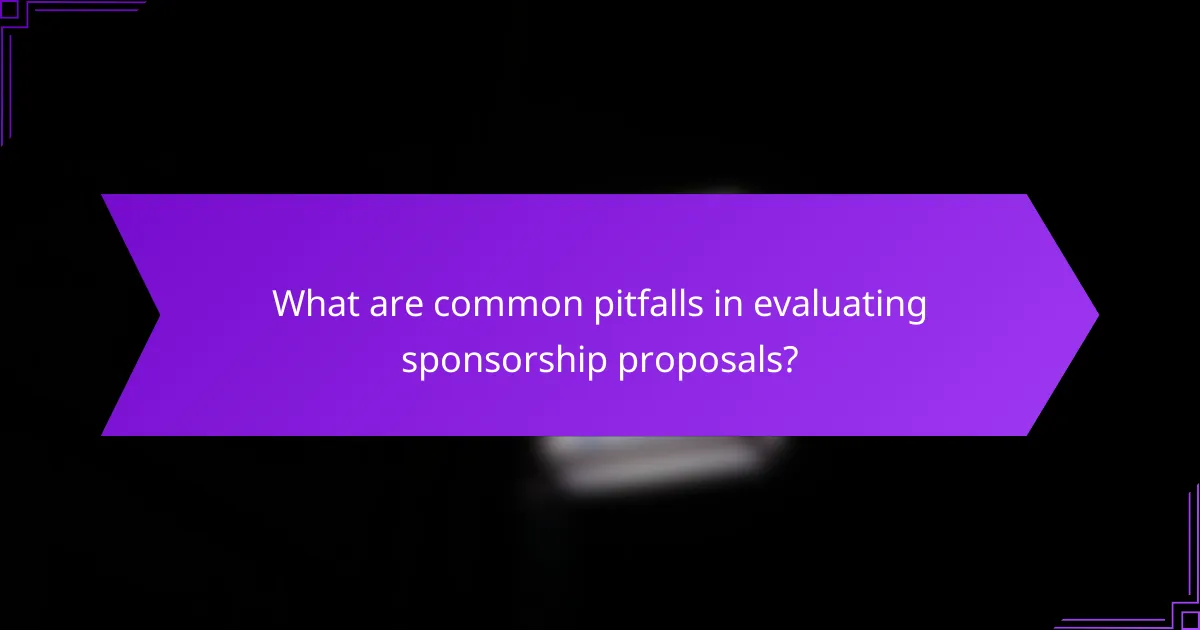
What are common pitfalls in evaluating sponsorship proposals?
Common pitfalls in evaluating sponsorship proposals include overlooking long-term benefits, ignoring audience fit, and neglecting contractual obligations. These mistakes can lead to missed opportunities and ineffective partnerships that do not align with organizational goals.
Overlooking long-term benefits
When assessing sponsorship proposals, it is crucial to consider not just immediate gains but also long-term advantages. A proposal that may seem less appealing at first could lead to sustained brand visibility and customer loyalty over time.
For example, a sponsorship that involves a multi-year commitment might yield greater returns through brand association and customer engagement than a one-off event. Evaluators should weigh potential future benefits against short-term costs.
Ignoring audience fit
Evaluating whether the sponsor’s target audience aligns with your own is vital. A mismatch can result in wasted resources and ineffective marketing efforts. Assess demographic data and audience engagement metrics to ensure compatibility.
For instance, if a tech company sponsors a community arts festival, the audience may not be interested in their products, leading to poor engagement. Prioritize proposals that resonate with your audience’s interests and values for better outcomes.
Neglecting contractual obligations
Understanding the contractual obligations of a sponsorship proposal is essential to avoid future conflicts. Failing to thoroughly review terms can lead to misunderstandings about deliverables, timelines, and financial commitments.
Ensure that all parties are clear on what is expected, including promotional activities and reporting requirements. A checklist of key contractual elements can help, such as payment schedules, rights to use logos, and cancellation policies, to ensure nothing is overlooked.
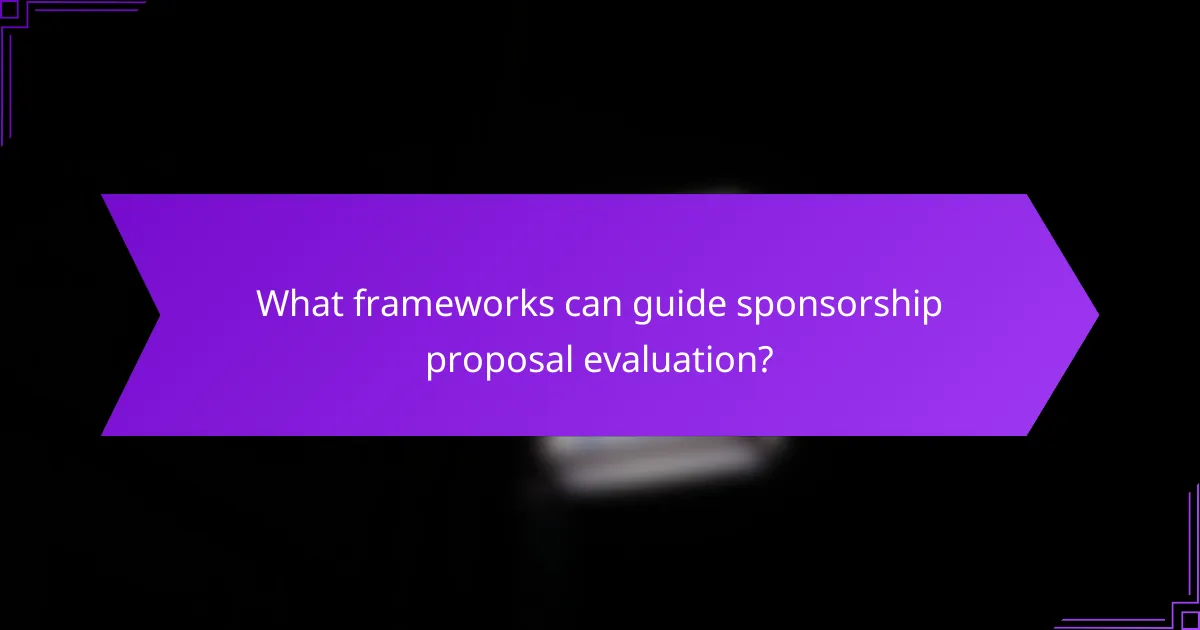
What frameworks can guide sponsorship proposal evaluation?
Evaluating sponsorship proposals can be effectively guided by frameworks like SWOT analysis and decision matrices. These tools help assess the strengths, weaknesses, opportunities, and threats of a proposal, as well as facilitate objective comparisons among multiple options.
SWOT analysis
SWOT analysis involves identifying the strengths, weaknesses, opportunities, and threats related to a sponsorship proposal. This framework allows evaluators to systematically analyze internal factors, such as the proposal’s alignment with brand values, and external factors, like market trends or competitive landscape.
For instance, a proposal may have strong brand alignment (strength) but face challenges in audience reach (weakness). Opportunities could include emerging markets, while threats might involve economic downturns affecting sponsorship budgets. Evaluators should list these elements to visualize the overall potential of each proposal.
Decision matrix
A decision matrix helps in comparing multiple sponsorship proposals based on specific criteria. By assigning weights to various factors such as cost, reach, and brand fit, evaluators can score each proposal to determine which one offers the best overall value.
For example, if cost is deemed most critical, it could receive a higher weight compared to other factors. Evaluators can then rate each proposal on a scale, multiply by the weights, and sum the scores for a clear comparison. This structured approach minimizes bias and enhances decision-making efficiency.

How to compare multiple sponsorship proposals?
To effectively compare multiple sponsorship proposals, establish clear criteria and metrics that reflect your goals. This structured approach allows for an objective evaluation of each proposal’s potential value and alignment with your objectives.
Scoring system
A scoring system provides a quantitative method to assess various sponsorship proposals. Start by defining key criteria such as audience reach, brand alignment, and potential return on investment (ROI). Assign weights to each criterion based on its importance to your overall goals.
For instance, you might rate each proposal on a scale of 1 to 10 for each criterion. Multiply the scores by the assigned weights to generate a total score for each proposal. This method not only simplifies comparisons but also highlights which proposals best meet your needs.
Be cautious of over-relying on numerical scores. Consider qualitative factors such as the sponsor’s reputation or past performance, which may not be fully captured by numbers. A balanced approach ensures a comprehensive evaluation of each proposal’s merits.
